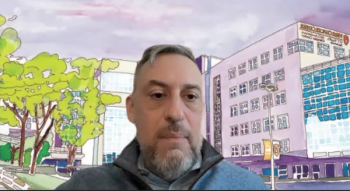
Potential Relationship Found Between SERPINB10 Expression, CRSwNP Recurrence
This new study explored how expression of SERPINB10 may be related to postoperative recurrence of and inflammation related to chronic rhinosinusitis with nasal polyps (CRSwNP).
SERPINB10, a proinflammatory cytokine expressed on epithelial cells, may hold potential as a biomarker indicating postoperative recurrence of and inflammation associated with chronic rhinosinusitis with
“The role of SERPINB10 in CRSwNP has not been described,” the study authors wrote. “This study is aimed at exploring the SERPINB10 expression in CRSwNP and its relationship with postoperative recidivation.”
Of the 140 patients recruited for this study, 60 had CRSwNP and 40 had chronic rhinosinusitis without nasal polyps (CRSsNP); there was also a group of 40 healthy controls (HCs). For their comparison purposes, tissue specimens were collected during surgery and real-time reverse transcription-polymerase chain reaction, western blotting, and immunofluorescence were used to determine SERPINB10 expression. The mean (SD) ages of the groups were equivalent, at 38.9 (11.8), 39.6 (11.0), and 36.7 (9.9) years in the CRSwNP, CRSsNP, and HC groups, respectively. The mean body mass index of each group was 24.0 kg/m2, and the CRSwNP group had the highest rate of smoking history (55%) vs the CRSsNP (47.5%) and HC (42.5%) groups.
Overall, the highest levels of peripheral eosinophil count and percentage were seen in the CRSwNP cohort, and this group also had higher mean visual analogue scale (VAS) and total nasal symptom (TNS) scores compared with the CRSsNP cohort:
- Peripheral eosinophil count:
- CRSwNP: 200 (100) 106/L (P = .003)
- CRSsNP: 190 (90) 106/L
- HCs: 130 (100) 106/L
- Peripheral eosinophil percentage:
- CRSwNP: 2.7% (1.1%) (P < .001)
- CRSsNP: 1.9% (0.9%)
- HCs: 1.7% (1.1%)
- VAS score:
- CRSwNP: 4.6 (2.8) (P = .002)
- CRSsNP: 3.0 (1.8)
- TNS score:
- CRSwNP: 15.1 (3.6) (P < .001)
- CRSsNP: 10.1 (3.9)
In addition, compared with patients with primary CRSwNP, those with a recurrence of CRSwNP were shown to have higher rates of allergic rhinitis, peripheral eosinophil percentage, tissue eosinophil count and percentage, and Lund-Mackay scores (all P < .05).
When mRNA and protein levels of tissue SERPINB10 were compared among the study groups, the CRSwNP cohort had enhanced levels of both compared with the HCs and patients with CRSsNP (P < .05). And when comparing outcomes between those with primary and recurrent CRSwNP, the latter group had significantly higher levels of SERPINB10 per protein and mRNA tissue samples). In addition, there were significantly increased levels of SERPINB10 immunoreactivity among the participants with CRSwNP, the study authors noted, vs the patients with CRSwNP or the HCs, and positive correlations were seen between tissue SERPINB10 mRNA levels and blood eosinophil count (r = 0.338; P = .008), tissue eosinophil count (r = 0.451; P < .001) and percentage (r = 0.394; P = .002), and Lund-Mackay score (r = 0:321; P = .013).
As for the ability of tissue SERPINB10 to be a predictive indicator of postop CRSwNP recurrence, although a link was seen between CRSwNP recurrence and tissue eosinophil percentage (odds ratio [OR], 1176; P = .016) and SERPINB10 mRNA levels (OR, 1.982; P = .014), the latter had a stronger predictive ability (area under the curve = 0.741; 95% CI, 0.612-0.871; P = .002), according to study findings.
“Although great efforts have been made to explore the pathogenesis of CRSwNP, an early prediction system for of CRSwNP recurrence has still not been constructed,” the authors stressed. “Therefore, exploring predictive biomarkers for prognosis and recurrence of CRSwNP is crucial, especially for those patients prone to recurrence.”
They concluded that although their data show SERPINB10 “might be associated with CRSwNP pathogenesis,” further studies are needed to confirm their findings and the underlying mechanisms of CRSwNP recurrence.
Reference
Deng Z, Li Z, She Y, Kie B. Increased expression of SERPINB10 associated with postoperative recurrence in chronic rhinosinusitis with nasal polyps. Dis Markers. Published online November 8, 2022. doi:10.1155/2022/7164318
Newsletter
Stay ahead of policy, cost, and value—subscribe to AJMC for expert insights at the intersection of clinical care and health economics.








































